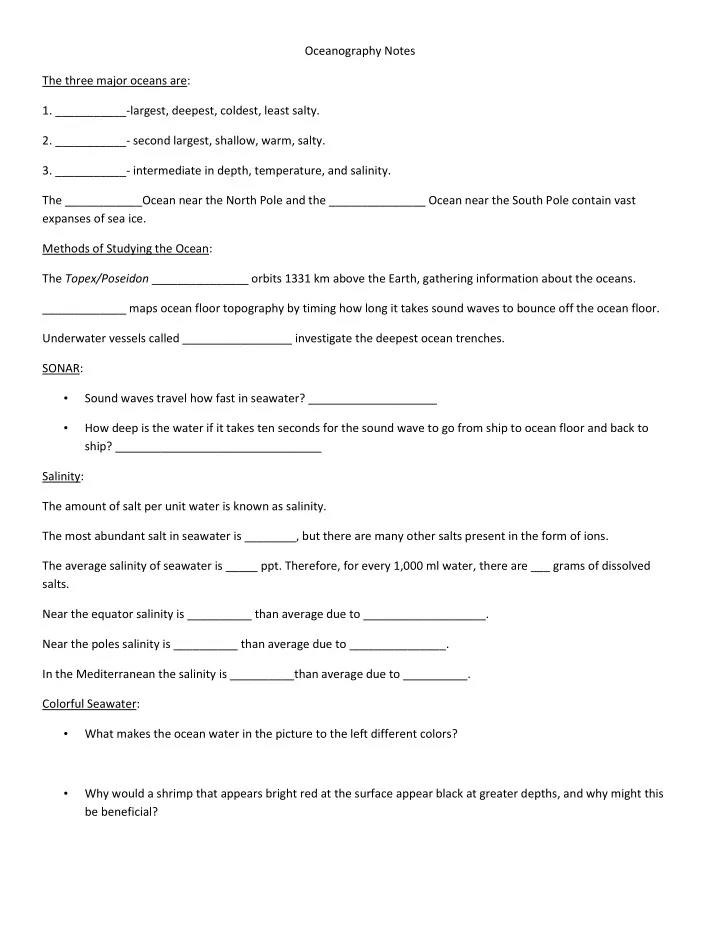

Oceanography Notes The three major oceans are: 1. ___________-largest, deepest, coldest, least salty. 2. ___________- second largest, shallow, warm, salty. 3. ___________- intermediate in depth, temperature, and salinity. The ____________Ocean near the North Pole and the _______________ Ocean near the South Pole contain vast expanses of sea ice. Methods of Studying the Ocean: The Topex/Poseidon _______________ orbits 1331 km above the Earth, gathering information about the oceans. _____________ maps ocean floor topography by timing how long it takes sound waves to bounce off the ocean floor. Underwater vessels called _________________ investigate the deepest ocean trenches. SONAR: • Sound waves travel how fast in seawater? ____________________ • How deep is the water if it takes ten seconds for the sound wave to go from ship to ocean floor and back to ship? ________________________________ Salinity: The amount of salt per unit water is known as salinity. The most abundant salt in seawater is ________, but there are many other salts present in the form of ions. The average salinity of seawater is _____ ppt. Therefore, for every 1,000 ml water, there are ___ grams of dissolved salts. Near the equator salinity is __________ than average due to ___________________. Near the poles salinity is __________ than average due to _______________. In the Mediterranean the salinity is __________than average due to __________. Colorful Seawater: • What makes the ocean water in the picture to the left different colors? • Why would a shrimp that appears bright red at the surface appear black at greater depths, and why might this be beneficial?
Ocean Movement: Ocean Tides: 30 25 20 Semidiurnal 15 Mixed Diurnal 10 5 0
Seafloor Topography: Label the features.
The force which generates these currents is ____________. Notes Review: 1. What is the average salinity of seawater? 2. What is the deepest area of the seafloor? 3. What is the largest ocean? 4. Why is the ocean “blue”? 5. What is the force responsible for surface currents? 6. What causes density currents? 7. What causes tides? 8. List the 3 tidal patterns. 9. What is the highest part of a wave called? 10. Name the ocean that borders Virginia.
Recommend
More recommend